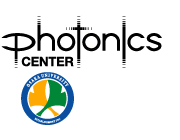【研究成果】2011
研究成果33
Imaging of EdU, an Alkyne-Tagged Cell Proliferation Probe, by Raman Microscopy
Hiroyuki Yamakoshi, Kosuke Dodo, Masaya Okada, Jun Ando, Almar Palonpon, Katsumasa Fujita, Satoshi Kawata, and Mikiko Sodeoka
Imaging of EdU, an Alkyne-Tagged Cell Proliferation Probe, by Raman Microscopy

EdU is readily incorporated into cellular DNA during DNA replication and accumulates in the nucleus.

Raman image obtained from HeLa cells treated with EdU by merging the images at 749, 2123, and 2849 cm-1, which were assigned to the blue, red, and green channels, respectively. The image acquisition time was 49 min.

The alkyne peak (2123 cm-1) was detected in the nucleus but not in the cytoplasm of HeLa cells treated with EdU.
We have achieved click-free visualization of the alkyne-tagged cell proliferation probe EdU by means of Raman microscopy. To our knowledge, his is the first example of direct imaging of an alkyne-modified molecule in living cells. The results demonstrate the potential of the alkyne moiety as an excellent Raman tag for live-cell imaging of small molecules. At least in the case of EdU, the ethynyl group is small enough not to affect the biological activity of the parent small molecule, and this result indicates that click-free imaging using Raman microscopy has the potential to be a powerful methodology for chemical biology research. It should be mentioned that the imaging speed of our approach could be further improved by application of nonlinear Raman techniques such as coherent anti-Stokes Raman scattering (CARS) and stimulated Raman scattering (SRS) microscopy. These efforts are just beginning, and Raman imaging of other small, alkyne-tagged molecules as well as the development of improved instrumentation is under way.



